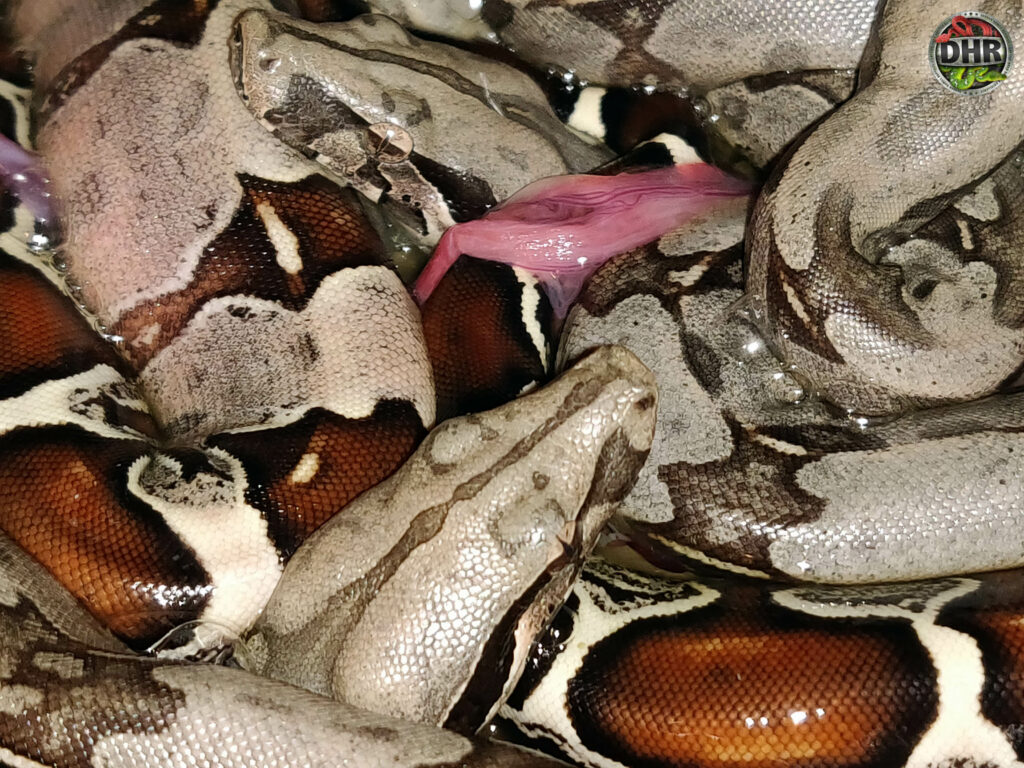Synonym
- Boa constrictor constrictor (LINNAEUS, 1758)
Common Names
- Suriname Red-tailed Boa
- Guyana Red-tailed Boa
- Red-tailed Boa
- Common Boa
Natural Distribution
True Red-tailed Boas is native to the northern regions of South America, specifically Suriname, as well as parts of neighboring countries such as Guyana, French Guiana, and northeastern Brazil.
Conservation status
- CITES Appendix II
- Least concern (LC)
The Red-tailed Boa (Boa constrictor constrictor) is listed as a species of “Least Concern” by The International Union for Conservation of Nature (IUCN).
However, the Convention on International Trade (CITES) in Endangered Species of Wild Fauna and Flora lists all BOIDAE subspecies (except the species included in Appendix I) as Appendix II. This includes species not necessarily threatened with extinction, but in which trade must be controlled in order to avoid utilization incompatible with their survival.
Description
True Red-tailed Boas are often sought after because of their beautifully colored red tails, unique dorsal saddles and often pink or purple coloration along the sides of their bodies. Boa c. constrictor are the nominate species of the complex, meaning they were the first of the species type to be described by LINNAEUS in 1758.
Characteristics
Size: The Suriname Red-tailed Boa is one of the larger subspecies of Boa constrictor, with adult individuals typically reaching lengths of 6 to 10 feet (1.8 to 3 meters), although some individuals may grow larger.
Coloration: The body coloration of these boas is highly variable, but they typically have a light brown or tan base color with dark brown or reddish-brown markings. The distinctive feature of this subspecies is its bright red tail.
Body Shape: They have a robust and muscular body, well-suited for constricting prey.
Scales: The scales of the Suriname Red-tailed Boa are smooth and glossy.
Head and Eyes: They have a triangular-shaped head and relatively small eyes compared to their body size.
Suriname red-tailed boas vary greatly in appearance depending on their locality. Although hobbyists often will seek out specific traits in locality types such as Suriname’s with large “widow” peaks, or Guyanese boas with pick sides, the reality is that each locality is highly variable in color and pattern. This may also be contributed to the fact that several of the locality Boa c. constrictors localities overlap, and therefore natural mixing occurs. Finally, wild caught animals are collected from several localities, and exported with no reliable means of tracking where they were collected.
Husbandry compared to the smaller Boa imperator, although true red tail boas tend to be less tolerant of frequent handling. They also require higher humidity and warmer summer temperatures than the smaller Boa c. imperator.
Furthermore, breeding Boa c. constrictor is also a greater challenge than other Boa c. spp., requiring cooler nigh time lows (66-68 F), dryer days, and often longer cooling periods to coax them into breeding.
Unfortunately, there are still many thousands of wild caught or farmed boas imported each year. As a result, imported animals tend to fare poorly in comparison to captive bred individuals, stressing more easily and plagued with both internal and external parasites. However, with captive breeding so common, as a result its very easy to find well established captive bred offspring.
True Red-tailed Boa Gallery






References
- Red-tailed Boa, Boa constrictor, The IUCN Red List of Threatened Species (accessed online 2023)
- Boa constrictor LINNAEUS, 1758 – The Reptile Database (Accessed Online, 2017)
- Convention on International Trade in Endangered Species of Wild Fauna and Flora (CITES) – Appendices I, II and III (Accessed Online, 2017)
